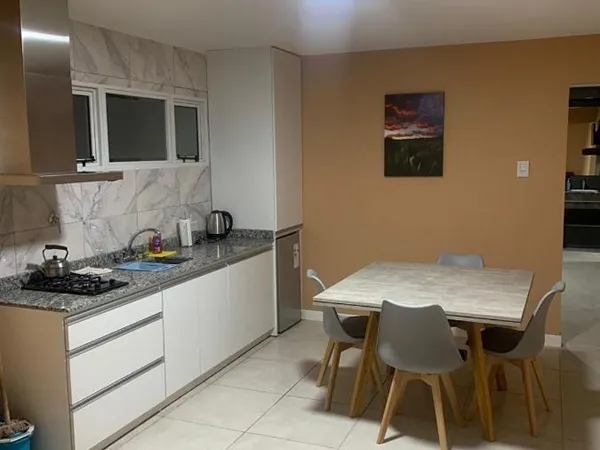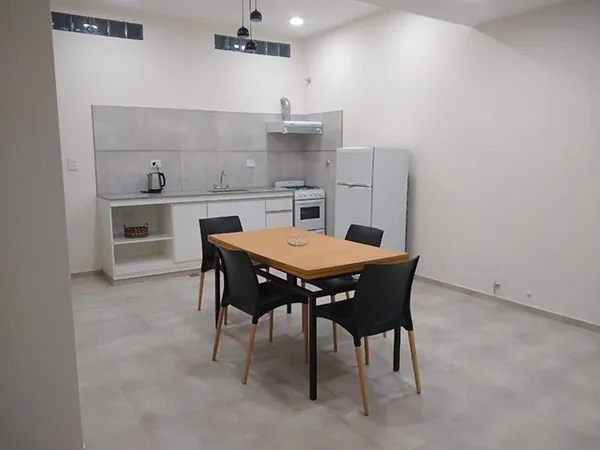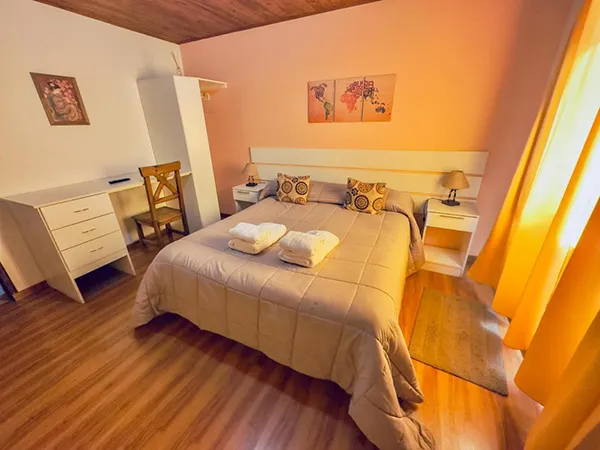Most people plan a wine trip to Mendoza without realizing that just a few hours from it sit some of the most unique destinations in Argentina. We have already covered San Rafael here as well as its unbelievable Canyon here, but today we’re talking REAL hidden gems.
Imagine exploring stunning volcanic terrains, majestic mountains, lakes, and rivers that are still unspoiled by tourism – not even very well known by Argentinians yet.
This is Malargüe. A really under-the-radar spectacular destination in the Mendoza province, which funnily enough we found completely by chance on Google Maps. Best surprise ever!
This remote area offers a unique set of adventure tourism, and we’ll break them all down for you in this guide. Let’s go!
Also read: Discover San Rafael, Mendoza: The Ultimate Top 10 Things to Do
Best Things to Do in Malargüe
1. La Payunia Reserve
Malargüe is part of the Andean volcanic belt, which stretches along the western edge of South America and the Andes mountain range. This region is characterized by significant tectonic activity, which has given rise to numerous volcanic formations in the area.
The most impressive of them is La Payunia Reserve. With more than 800 volcanic cones, extensive lava fields, and striking black sand plains, visiting it feels like stepping foot on a completely different planet.
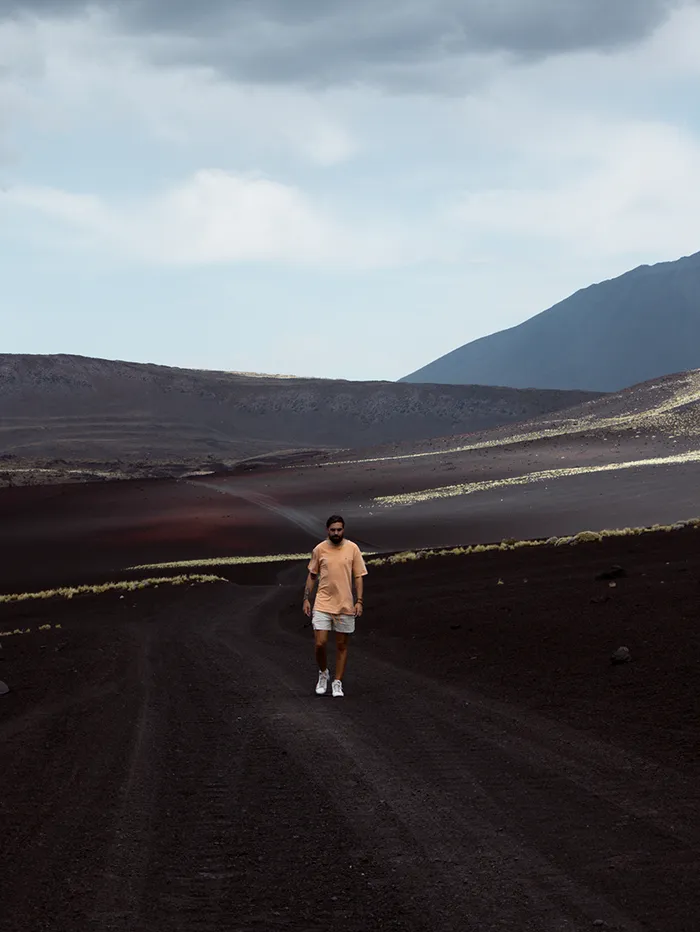
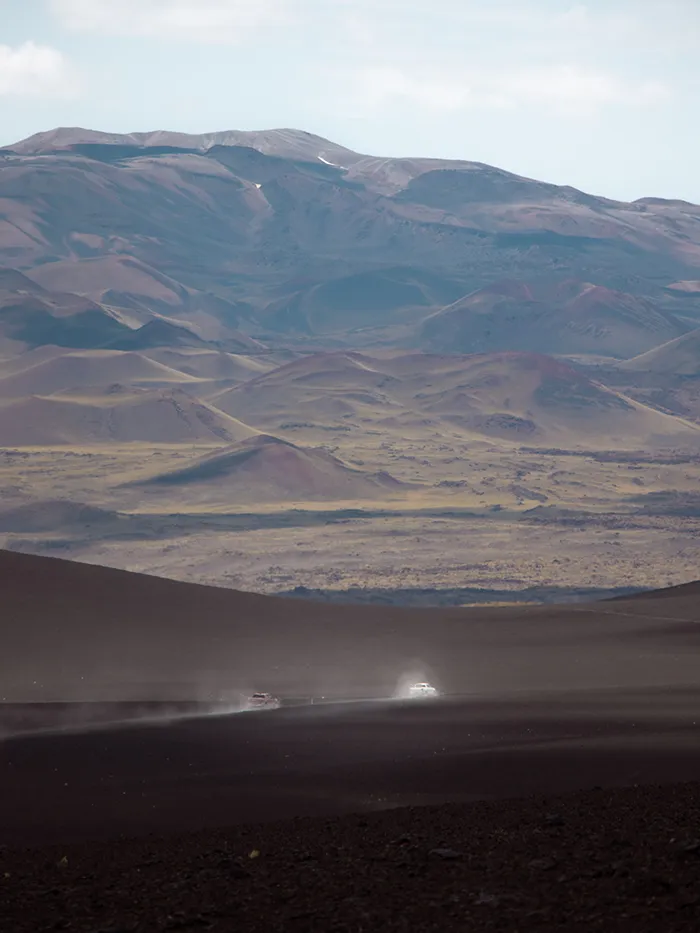
Read more: How to Visit La Payunia – The Land of Volcanoes
The reserve is also home to very diverse wildlife, including guanacos (a smaller cousin of the llamas), foxes, and a variety of bird species such as the Andean condor. The flora is equally fascinating, with desert plants adapted to the volcanic soil and arid conditions.
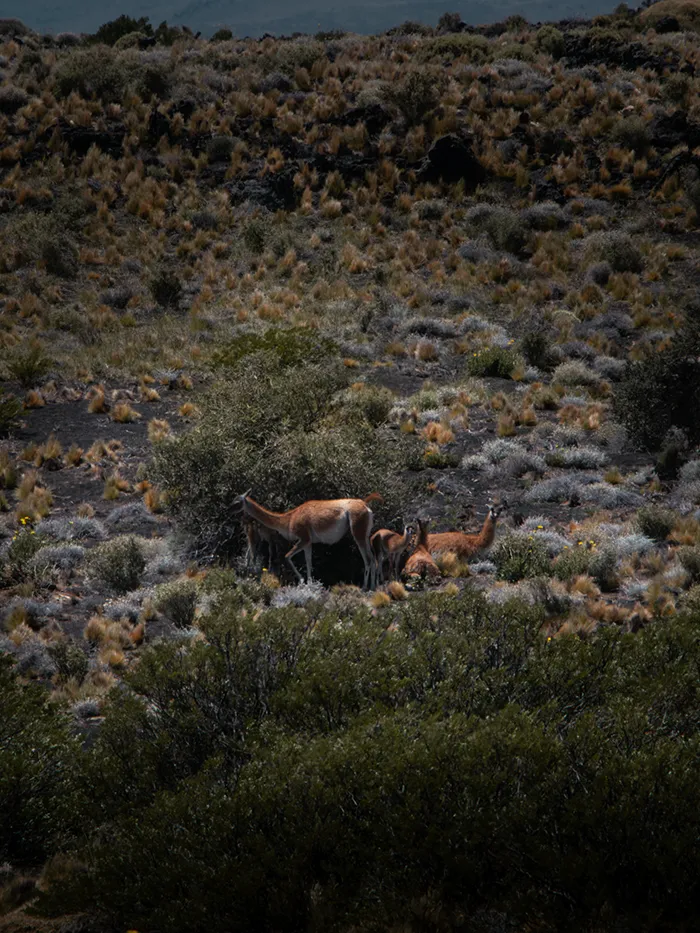
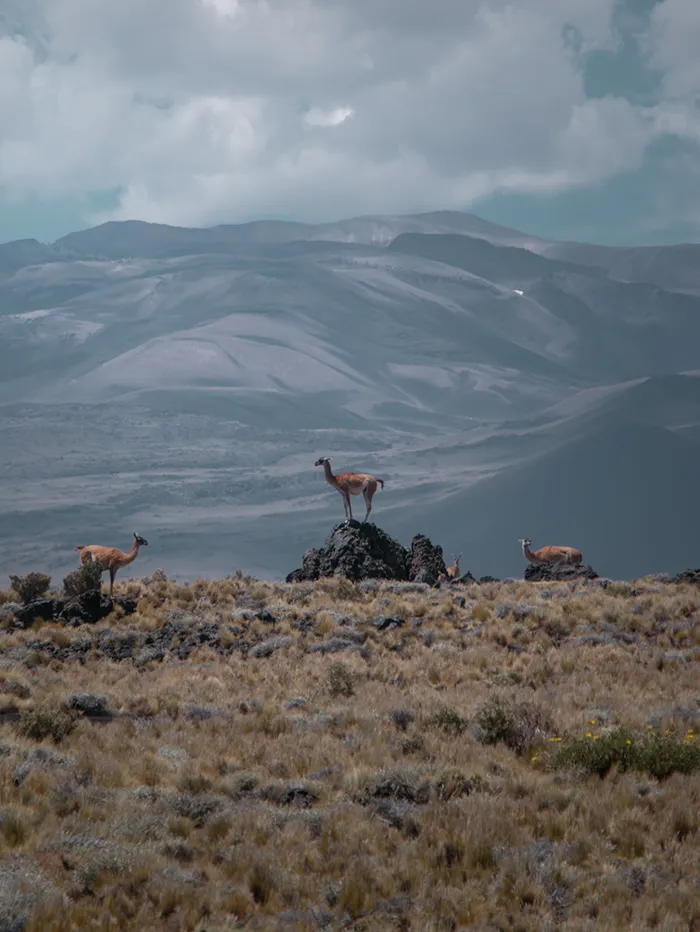
Note: You can only visit La Payunia Reserve with a guided tour. We did ours with Choique Turismo and we recommend them! You can read more about our experience at La Payunia Reserve here.
2. Malacara Volcano
Still talking about volcanos, you can check both hiking to the top of a volcano and hiking inside one out of your bucket list here in Malargüe.
You’ll do the second at Malacara, a very special volcano that had a hydromagmatic eruption, which occurs when the lava comes in contact with water. Differently from the other volcanoes in the area, this kind of eruption created passages, caves, and chimneys that can be visited by entering the volcano.
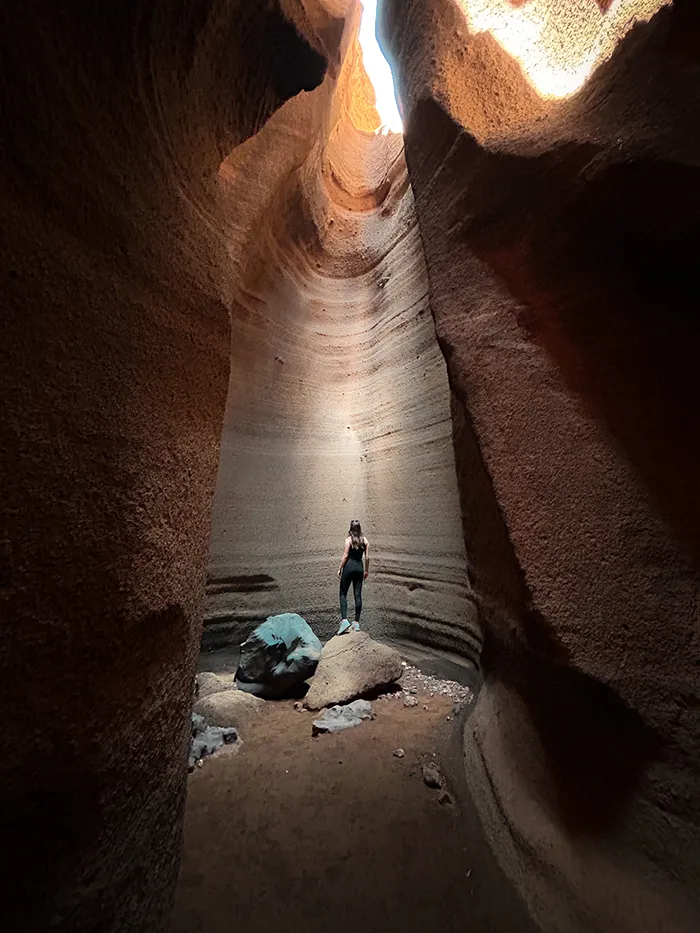
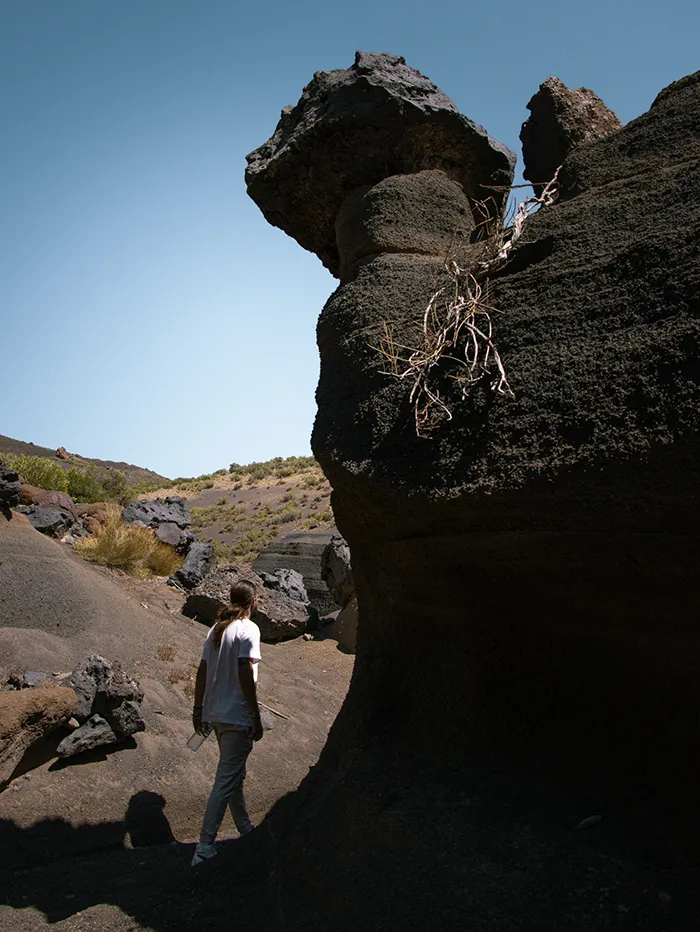
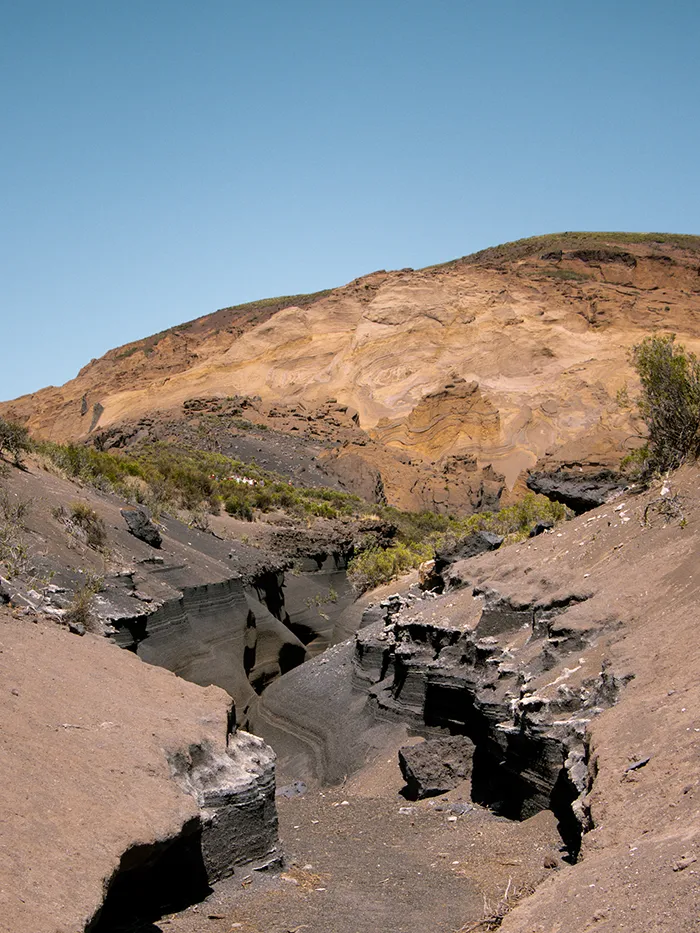
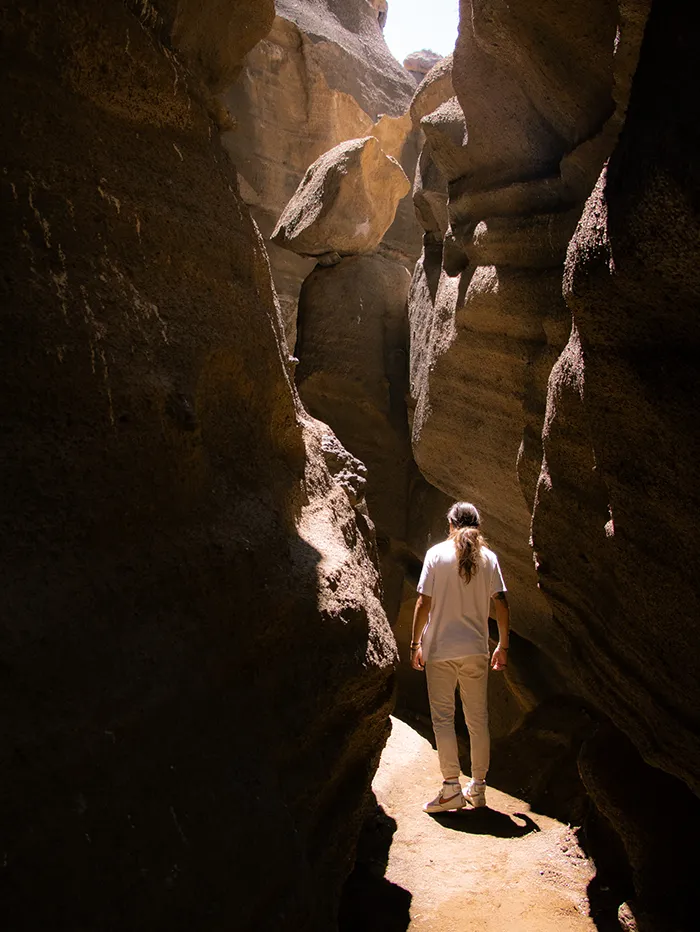
Fun fact: its name is due to the resemblance to the spotted face of the Malacara horses, given that the volcano is also spotted with a light color, resembling that of the horse.
Note: Just like Payunia, you can only visit Malacara Volcano with a guided tour. We also did this one with Choique Turismo and had a lovely local guide accompany us and teach us the history of the region.
3. Llancanelo Lake
Llancanelo Lake is a significant and stunning natural reserve that along with its surrounding wetlands covers an area of approximately 650 square kilometers. It is considered one of the most important wetland ecosystems in Argentina.
This shallow saline lake is a vital habitat for bird species, particularly flamingos. Around the lagoon, extensive salt flats create a beautiful landscape as the giant Cerro Nevado paints the background.
Tip: the best time to visit is during the spring and autumn months when bird activity is highest, and temperatures are moderate. You can see both on your own by renting a car or joining a guided tour (the lake is around 1:30h driving from Malargüe).
4. Caverna de las Brujas Natural Reserve
Caverna de las Brujas Natural Reserve is named after its biggest attraction: a large impressive limestone cave system named Caverna de las Brujas (Witch’s Cave). It is a karst cave system formed by the dissolution of limestone over millions of years. The cave is renowned for its stunning cave formations such as stalactites, stalagmites, columns, and flowstones.
Note: You can only visit Caverna de las Brujas Natural Reserve with a guided tour to ensure safety and the cave’s preservation.
5. Manqui Malal Waterfall
Cascada de Manqui Malal is a waterfall surrounded by rugged beauty and dramatic rock formations. The hiking trails that lead to and around the waterfall are filled with remnants of marine fossils embedded in the rocks, offering a glimpse into the distant past when the region used to be covered by the sea.
6. Castillos de Pincheira
Castillos de Pincheira is a series of impressive rock formations that resemble a medieval fortress or castle. These formations are the result of erosional processes that have sculpted the landscape over millions of years, creating stunning towers, natural arches, windows, and spires.
Legend has it that the name comes from the Pincheira brothers, infamous outlaws who were said to have used the area as a hideout in the early 19th century. According to local folklore, the rugged terrain and hidden caves provided the perfect refuge for the bandits.
Also read: What To Do in Mendoza – A Guide to Argentina’s Wine Capital
7. Las Leñas Ski Resort
Las Leñas is one of the most famous ski resorts in South America for its excellent snow conditions and challenging runs. Most tourists will stay in San Rafael and drive almost 3 hours to ski, without realizing Malargüe is much closer (and also cheaper).
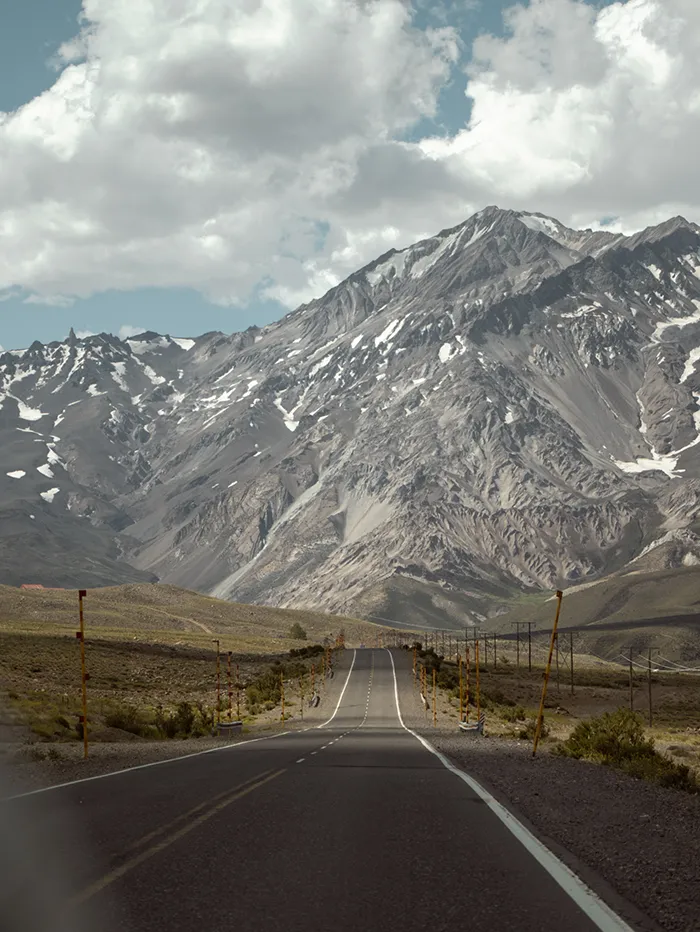
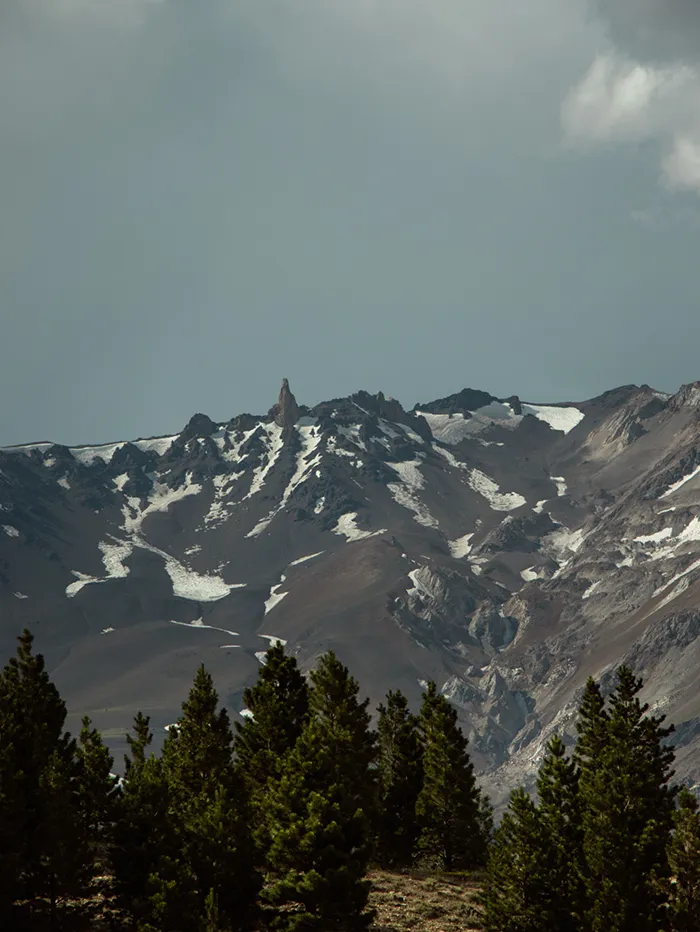
Located in the heart of the Andes Mountains and renowned for its extensive ski terrain, modern facilities, and stunning mountain scenery, Las Leñas attracts skiers and snowboarders from all around the world.
⛷️ If you’re a skier, here are some impressive facts for you:
- 29 trails accessed by 14 lifts, including chairlifts and magic carpets for beginners
- Vertical drop of 1,200 meters, with the highest lift reaching up to 3,420 meters above sea level
- Home to Marte run, one of the longest and most challenging ski runs in South America
8. La Niña Encantada Lagoon
Legend has it that an indigenous princess fell in love with a commoner against her father’s will, who relentlessly tried to separate them. To escape their fate, the couple fled and found refuge near a lagoon.
Tragically, they were discovered, and the princess threw herself from a cliff into the lagoon to avoid capture. It’s believed that her spirit still inhabits the beautiful clear waters of La Niña Encantada Lagoon (Lagoon of the Enchanted Girl).
It’s easy to see why they named it this way, the place looks indeed enchanted. Its crystal-clear waters are fed by underground springs and have the most beautiful hues of blue.
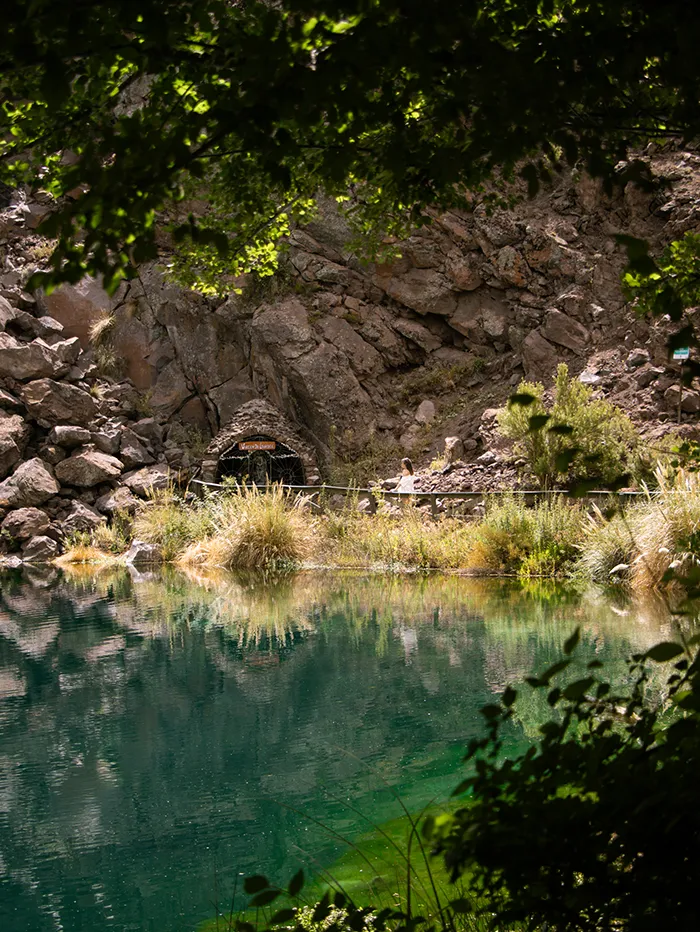
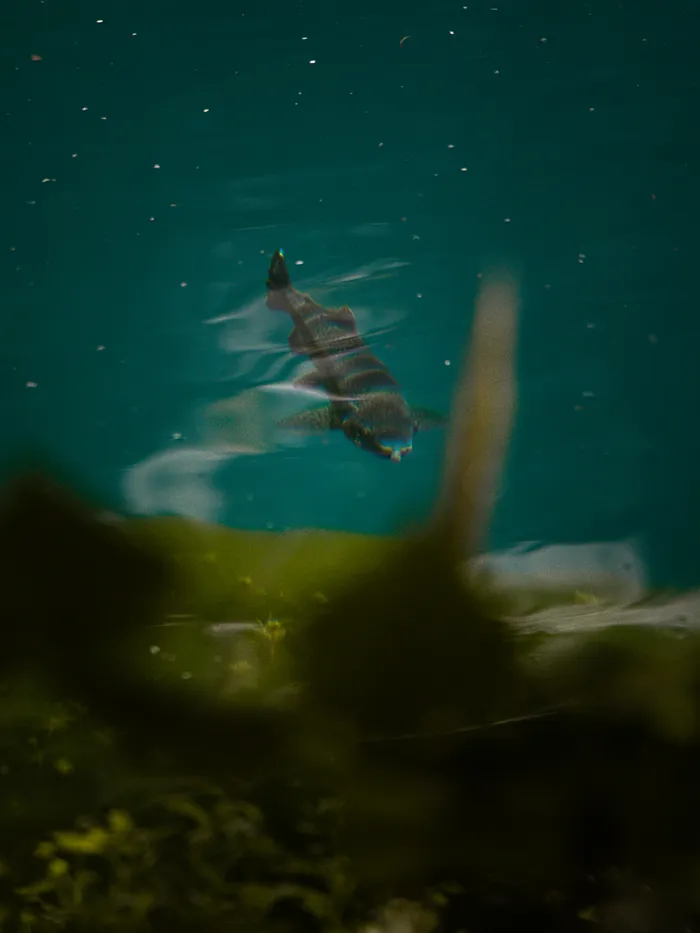
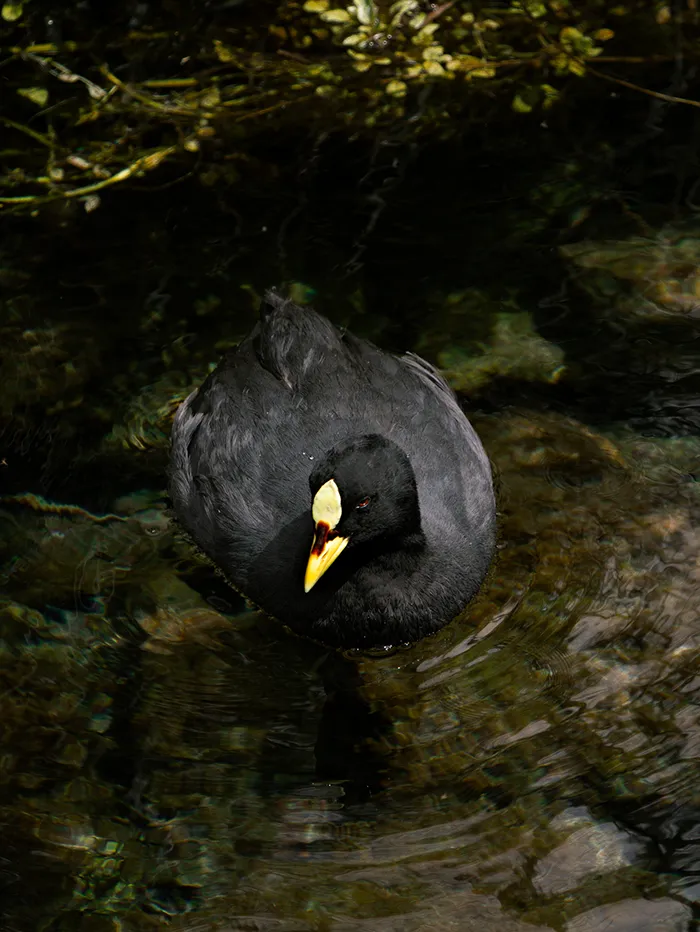
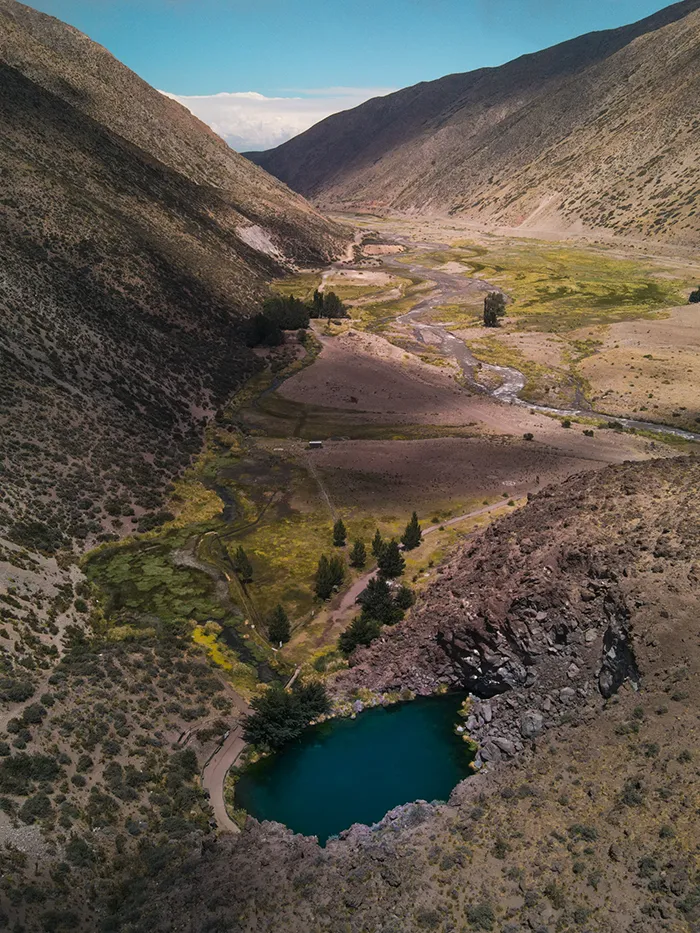
9. Pozo de Las Ánimas
Pozo de las Ánimas (literally translated to Well of Souls), is a fascinating geological formation that consists of two adjacent sinkholes formed by the collapse of underground caves. These sinkholes are filled with water, creating lagoons with water that appears strikingly blue due to the depth and mineral content.
What makes it even more impressive is their size: the two sinkholes have steep walls and a depth of around 21 meters. The larger sinkhole has a diameter of about 100 meters. Some viewpoints and platforms allow you to observe the sinkholes and the lagoons below safely.
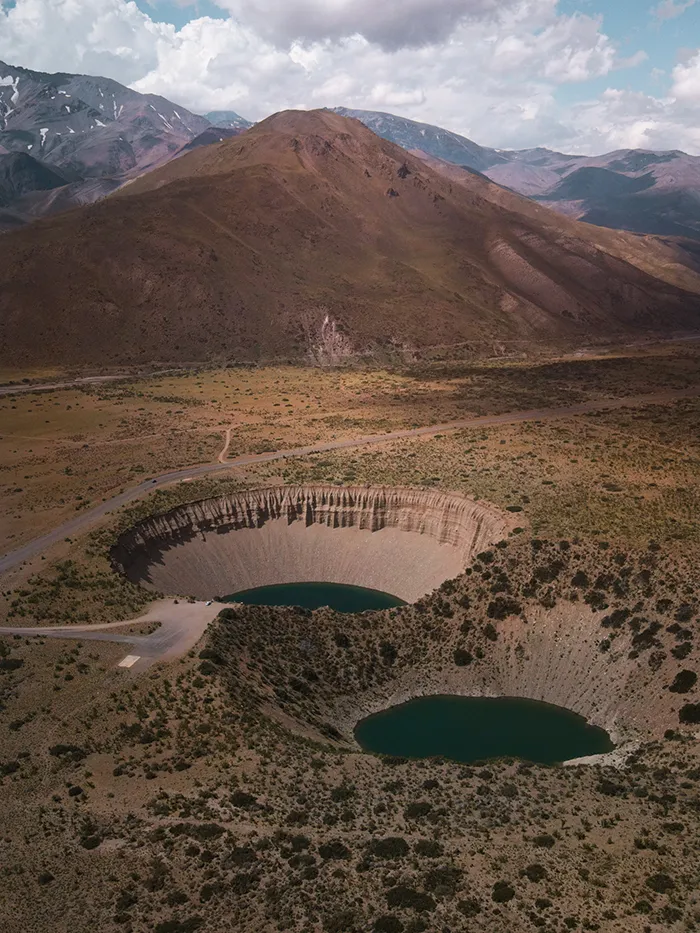
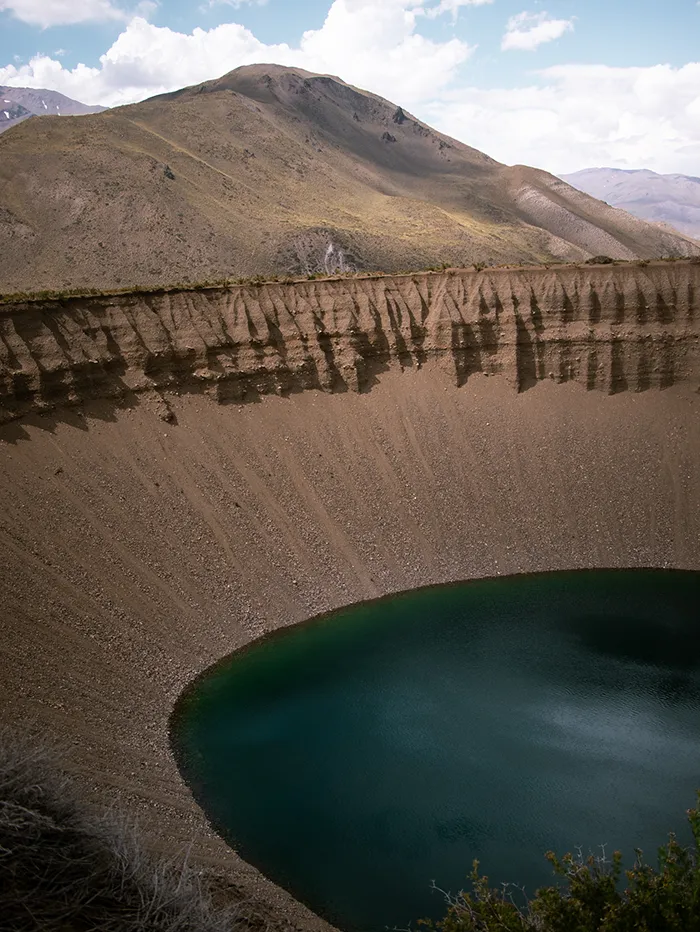
Fun fact: the name comes from the haunting sounds produced by the wind as it moves through the sinkholes, which local legend attributes to lost spirits.
10. Los Molles
Los Molles is a charming mountain village on the way to Las Leñas Ski Resort and a great option to base yourself on if you’re planning a winter holiday.
Here, you can enjoy top-notch restaurants offering both regional and international cuisine, tea houses, therapeutic thermal baths, and outdoor activities such as horseback riding, trekking, mountain biking, and climbing.
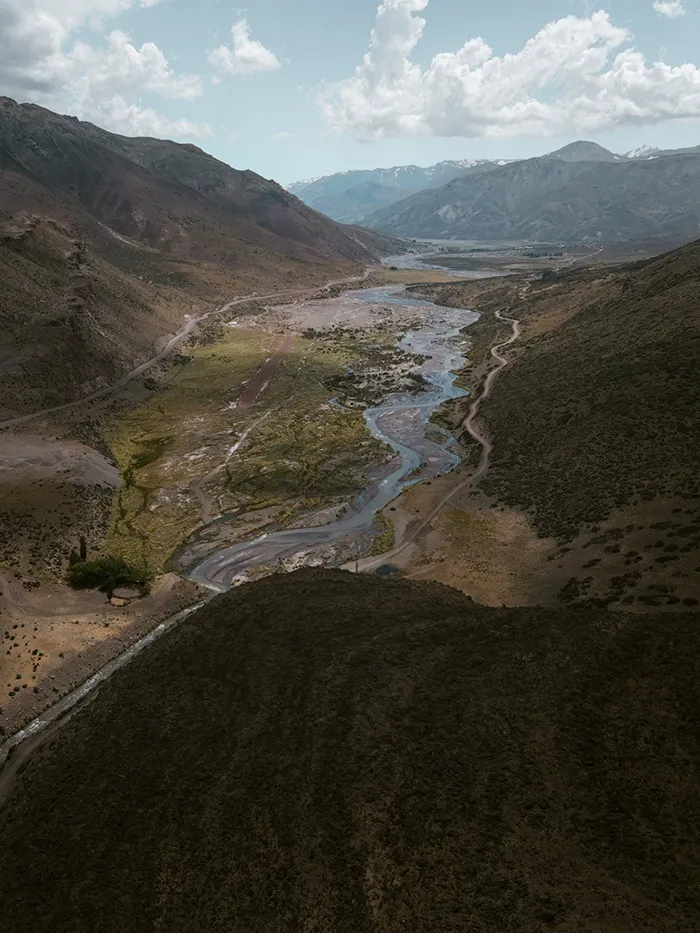
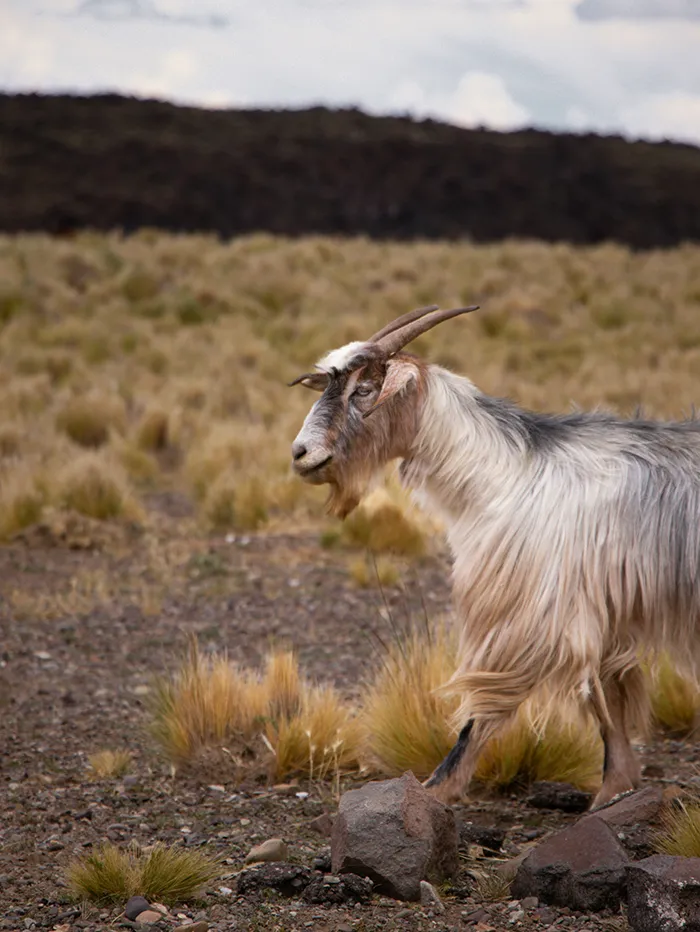
11. Valle Hermoso
After Las Leñas, a secluded valley is aptly named for its breathtaking landscapes: Valle Hermoso, or Beautiful Valley, is surrounded by towering mountains and features a serene lake at its center. The journey involves a scenic drive through the mountains, which can only be accessed by 4×4 vehicles due to the rough terrain.
Like at Los Molles, Valle Hermoso is also the backdrop for many activities, such as hiking, camping, off-roading, and horseback riding.
Hot tip: ask your guide to take you to Termas de Cobre so you can bathe in a hidden thermal spring or follow this route.
12. Termas del Sosneado Hotel
Once a luxurious thermal spa destination, Termas del Sosneado Hotel is now an abandoned ruin in the middle of the Andes Mountains.
The hotel was built in 1938 by a state-owned company and it was aimed at promoting tourism in Argentina. Despite its initial success, it was closed in 1953, reportedly due to financial difficulties and the challenging accessibility of the remote location.
While abandoned, it remains accessible to adventurous travelers who want to bathe in these remote hot springs, although a 4×4 vehicle is required due to rough terrain and dirt roads.
Also read: Mendoza Wine Tour: How to Choose the Best Wineries to Visit
13. Cajón Grande Springs
A much more accessible option for natural hot springs in the Andes is the Cajón Grande Springs. These thermal springs are known for their mineral-rich waters, which are believed to have various health benefits and are naturally heated by geothermal activity. The water temperatures can vary, but they are typically warm and soothing, ideal for soaking.
Tip: visiting Termas de Cajón Grande during the winter is also possible, but the cold weather and snow can make access (via dirt road) more difficult and sometimes not possible.
14. Laguna del Diamante
Laguna del Diamante is a stunning high-altitude lake situated at around 3,300 meters above sea level in the Andes Mountains. The most striking feature though is its backdrop, the Maipo Volcano which reflects in the lagoon’s glacial waters, giving it its name: Diamond Lagoon.
Note: the lagoon is accessible via a rough mountain road, typically open from December to April when the weather conditions allow safe travel.
15. Laberintos Carmona
If you get on a chat with a local person in Malargüe, they’ll all tell you to visit the Laberintos Carmona. This large complex is known for its complex and beautifully designed mazes, set against the scenic backdrop of the Andean foothills. There are several different mazes to explore, each with its distinct design and difficulty level.
Also read: How to Visit Aconcagua – Ultimate Guide & Tips
How to Get to Malargüe
🚗 By car: the most common way to reach Malargüe from Mendoza is by driving via the scenic Route 40 which offers views of the Andean landscape along the way. The journey takes around 4 hours.
🚌 By bus: several bus services connect Mendoza City to Malargüe, and the journey lasts around 4:30 to 5h via Route 40.
If you’re coming from San Rafael, the same options are available and the journey is much faster taking about 2:30 hours only.
Best Time to Visit Malargüe
The best time to visit Malargüe largely depends on what you want to experience, but we can say this tiny town is a year-round type of destination.
Winter months, mainly July and August to mid-September, are the best months for winter sports enthusiasts. For those looking to enjoy the endless outdoor activities, summer is the ideal time. Spring and autumn are also great, but temperatures are milder.
Where to Stay in Malargüe
Malargüe has one main road (it is a tiny tiny town), so as long as you’re near the main road, you’re very well located. Also, there aren’t many hotels in the area that you can book online (Hotel Maggio being the exception), so you’ll likely be getting a whole apartment for yourself.
If you have your own transport, then the cabins near town are also a great option, such as Eco Malargüe. Here are the accommodations we recommend:
Hot tip: for a smooth travel experience, we always recommend using a Wise debit card for the best withdrawal fees around the globe and Airalo to never arrive in a foreign country without internet.

